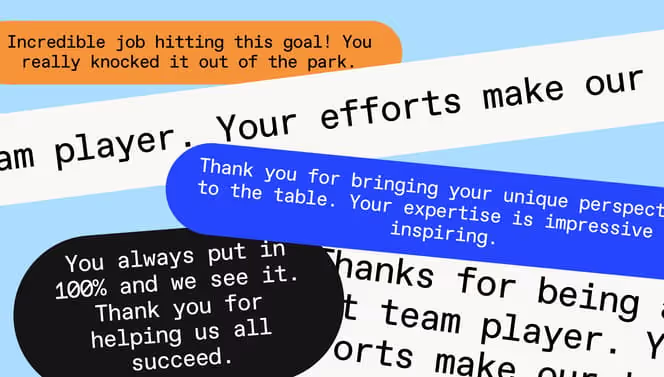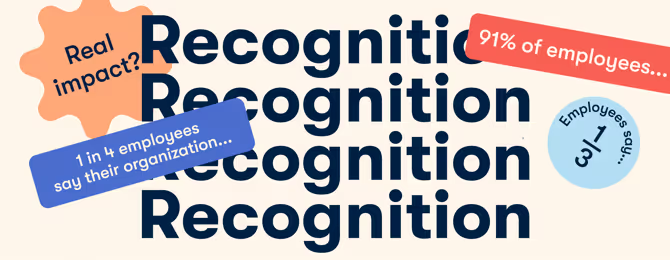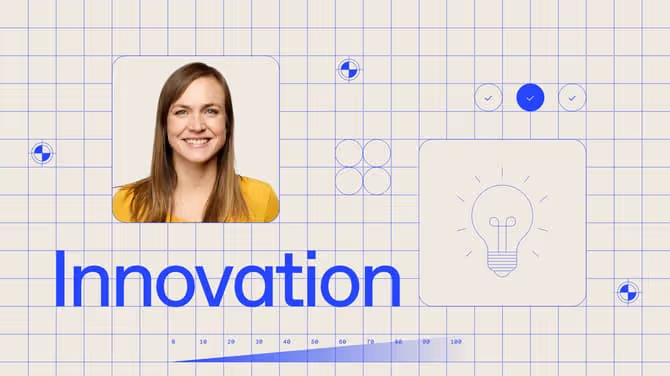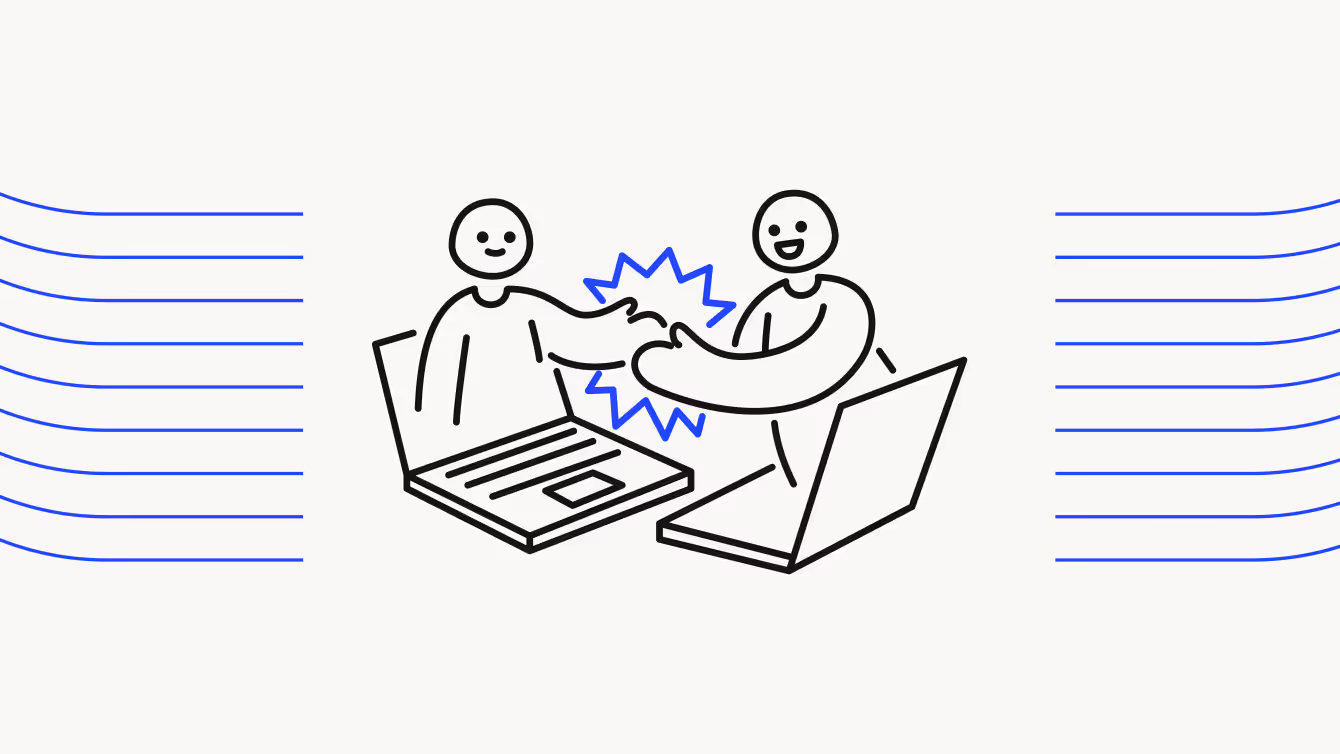How managers can facilitate a culture of peer recognition

Discover Workleap Officevibe's benchmark report on 12 key employee engagement metrics

Recognition in the workplace is an important part of employee culture and a company's values. As a manager, recognizing your team for their efforts is the cornerstone to building trust and employee engagement. However, it's equally important to make sure peers share recognition. Peers have different vantage points regarding knowing each other's strengths and how each employee contributes to the team.
Taking the time for peer-to-peer recognition helps shape a positive culture, further strengthening team relationships and motivation. Having a peer recognition platform in place can hugely impact the team and each individual's self-esteem in the workplace.
In fact, according to Bonusly, 86.57% of all employee recognition in 2020 (given by Bonusly users) was peer-to-peer. A notable increase worthy of a closer look.
What is peer recognition?
Peer recognition is the act of employees giving recognition to other employees. It's part of employee recognition as a concept that extends beyond manager recognition or human resources, as it doesn't always have to come from the top down. A peer recognition model can come in all shapes and sizes, but the benefits of peer recognition are felt across the board.
Giving praise on all levels helps make recognition collaborative and meaningful.
{emphasize}
88% of Officevibe survey respondents agree that their organization encourages employees to give recognition to one another.{emphasize}
Receiving peer recognition enables employees to give each other the boost they need to push projects to the finish line and achieve great work. Ultimately, developing a collaborative approach to recognition means acknowledging each other for things like your peer's skills, efforts, accolades, and strengths. Employee recognition should be a central part of your company values.
But here's the thing, it takes more than a rewards system to motivate employees. Integrating frequent peer recognition practices on your team can positively impact morale and employee engagement. Using a peer recognition program will help tremendously. As a manager, the first step is to identify where to start.
Officevibe helps you spot where peer relationships might be lacking. Using poignant data helps you contextualize where to increase initiatives that facilitate peer-to-peer appreciation. It also gathers data to help you recognize where peer-to-peer recognition is needed.
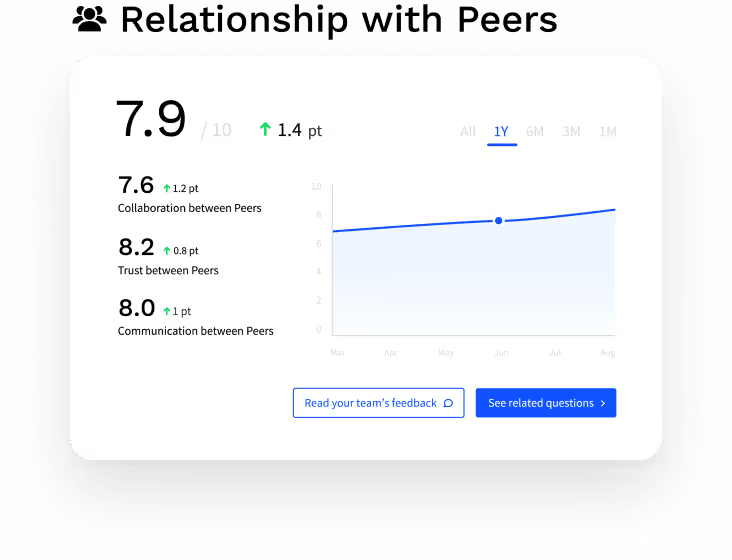
💬 Another way to figure out your team's recognition needs? Ask them! Use this free survey template to know what kind of recognition your people seek and what makes it meaningful.
What makes peer recognition important?
As a manager, it can feel like the onus is on you when it comes to making sure that your team knows they are valued contributors. Manager recognition is absolutely essential for team engagement and performance. And yet, our data reveals that employees want more recognition.
{emphasize}
40% of employees negatively rate the frequency at which they receive recognition.{emphasize}
By encouraging and facilitating a culture of peer recognition, the weight gets distributed, employees feel valued, and strong professional relationships are built. Creating a positive recognition experience doesn't just stem from HR professionals. It's a necessary and valued exchange between peers.
Peer recognition helps boost employee performance and company morale. Not only is recognition a catalyst for peer appreciation, but doing so on a group level develops a strong sense of support and camaraderie.
Keeping this in mind, it's clear that peers play a vital role in employee satisfaction. Consequently, integrating a peer recognition program contributes to positive company culture.
The benefits of having a peer recognition program
Peer recognition diminishes employee turnover
When it comes to preventing turnover, employee recognition goes a long way. Without credit, people tend not to feel appreciated by the company, making them more likely to leave.
A solid employee recognition program helps people identify more with the company culture and values and feel a greater sense of belonging. As a result, you up the chances of your employees sticking around.
Peer recognition increases employee engagement
Many factors help increase employee engagement, peer-to-peer recognition being one of them. Peer recognition programs play a significant role in job satisfaction and happiness in the workplace. Regular kudos helps increase engagement, which benefits the employee and the entire team.
Harvard Business Review reveals that having an effective peer recognition program makes for happier, more engaged employees and a 14 to 29 percent increase in profits.
Peer recognition develops trust
The more your team is capable of expressing recognition amongst one another, the more they'll learn they can trust each other. When individuals feel they're being recognized for their work, they dilute sensations of competitiveness and replace them with collaboration.
Peer recognition boosts team morale
When teammates know that efforts are being noticed and appreciated: morale increases. Doing so consistently ensures that your team's happiness remains consistent, prompting more productivity and job satisfaction.
Knowing how to make peers happy with simple gestures of appreciation and gratitude develops team spirit. As a result, you nurture resilient employee-to-employee relationships, and co-workers strengthen their bonds!
Peer recognition increases motivation
When people feel recognized for their work, they feel seen. In turn, it encourages employees to contribute, learn, and develop their skills. Motivation reframes any burden of high objectives – crucial to a successful organization. After all, a high momentum environment keeps its foundation strong.
Peer recognition amplifies strengths
A robust peer recognition program amplifies people's strengths. Giving meaningful peer recognition and genuine compliments prompts employees to reflect on and highlight great work. Building a strengths-based team culture is one that drives employee performance.
[ov_cta id="5118858"]
6 ideas to help implement peer recognition with your team
There are several peer recognition programs or ideas that you can easily implement with your team to increase employee happiness. We took the liberty of weeding through which employee recognition programs are most effective to set you and your team up for success.
Here is a short list of peer recognition and rewards initiatives that are accessible and easily implemented.
1. Create a kudos board or train
Turn internal communications tools into a peer recognition tool! A helpful way to make peer recognition a habitual part of your organizational values is by starting a kudos board. Using Slack or Miro, fellow employees can encourage each other to participate in sharing peer appreciation.
But keep in mind that public recognition might not be the best way to recognize everyone. Some might enjoy receiving public praise or social recognition, while others are more comfortable with a private exchange. (Officevibe Good Vibes is a great recognition platform to exchange one-on-one peer-to-peer recognition, which we'll explore in #6.)
{emphasize}
Tip: Encourage a kudos train! Ask each employee to give kudos to a colleague who then pays it forward to another colleague.{emphasize}
2. Celebrate milestones collaboratively
Milestones come in all shapes and sizes. Whether your team celebrates an employee who has completed a big project, achieved a personal goal, or is celebrating a work anniversary, the team can recognize this together.
How about celebrating a colleague's work anniversary with a shared Miro board?
For example: One person can be in charge of setting up a celebratory Miro board, the other organizes a small gift delivery (with contributions from the team), another can set up social media shout-outs from the company, and so on.
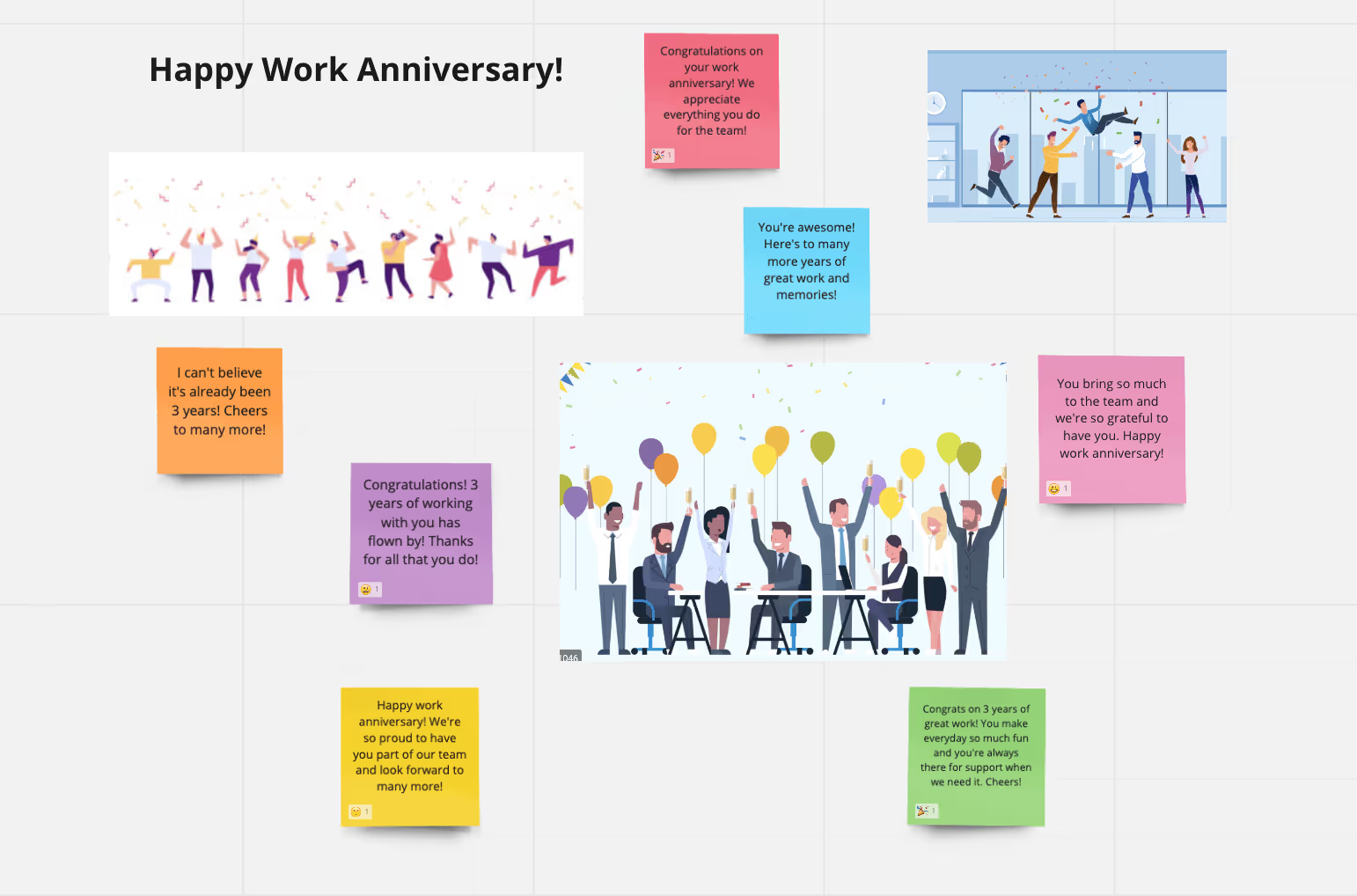
{emphasize}Tip: Have each team member look after a detail to celebrate their peer through genuine expression. Encourage them to get creative and have fun!{emphasize}
3. Integrate peer recognition into daily rituals
Peer recognition programs encourage employees to share their appreciation for how involved others have been in their success. The goal is to make sure that recognition feels baked into the company culture in everyday practices like morning meetings or retrospectives. The key isn't to have lengthy discussions but to acknowledge what each person brings to the table often. Frequent recognition is key. 🔑
{emphasize}Tip: Lead by example. Teams follow their leaders, so if you start the trend of giving recognition, your team is sure to follow. It can be as simple as “I'm feeling very grateful for our team today. One thing that stood out recently was X's contribution to our goals. Does anyone else have appreciation they can share about their team members?”{emphasize}
Feel free to get inspired by more than a few examples of employee recognition messages.
4. Encourage peers to build meaningful connections
During uncertain times, peer recognition does not always need to be linked to achievement. It can take the form of recognizing one another's realities and allowing an open and safe space to share each other's needs. Recognition means appreciating and also seeing one another and actively listening. It's important to recognize peers in a meaningful way.
Tips for managers to help foster supportive connections:
- Encourage your team to check in on one another and take a break.
- Make sure they feel equipped to be productive and supply them with the right recognition tools if needed.
- Let your team know they're there to support each other just as much as you guide them.
5. End the week by sharing one way a teammate helped another
During your Friday morning meeting, encourage each team member to highlight one thing the group or individual did to help them that week. Ending your week on a high note makes a big difference, especially during times of high stress. Creating a recognition culture will be appreciated by all.
{emphasize}Tip: Each team member goes around the virtual table to bring to light one action item that was made possible by the team or by a peer.{emphasize}
6. Send Good Vibes for peer-to-peer recognition
There are many ways to deliver peer-to-peer recognition. Officevibe's Good Vibes feature is a fun and easy recognition platform that helps highlight positive efforts and gives your employees a simple, human way to recognize each other.
Not everyone wants peer feedback in the form of a public shoutout. Good Vibes creates a more personal connection between colleagues and managers by sending meaningful notes directly (like a social media DM via the Officevibe app), rather than using noisy praise walls, a competitive rewards program, or a point-based system.
{emphasize}👉🏼 It's important to recognize employees in the most receptive way, so peer programs like this provide that more intimate and less public option.{emphasize}
Building a culture of positive feedback
Why not make every day co-worker appreciation day? Developing a culture of peer-to-peer recognition is easy, accessible, and fun. Once you implement a successful peer recognition program, you'll notice how co-workers strengthen their camaraderie and work relationships, connect more with core values, and show greater support between team members. It can even increase employee morale and boost self-esteem.
In the long run, a peer-to-peer recognition program can be the spark of genius you need for your team to achieve their goals, build team spirit, and have fun in the process. Genuine praise is an essential part of a positive workplace. And when companies focus on creating a great workplace culture, great things happen. Start sharing the good vibes today!
Give HR and managers the clarity, confidence, and connection to lead better every day.


%20(1).avif)


.avif)
.avif)

